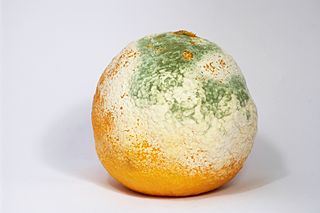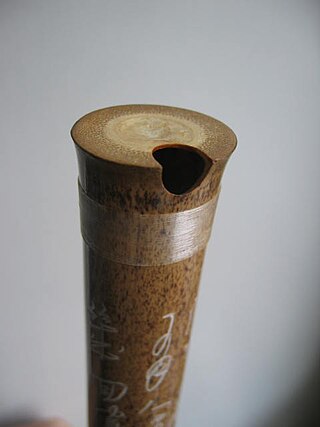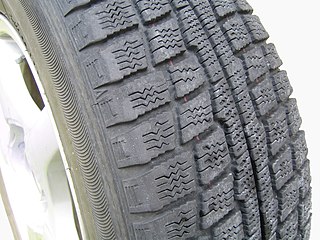
The polar climate regions are characterized by a lack of warm summers but with varying winters. Every month a polar climate has an average temperature of less than 10 °C (50 °F). Regions with a polar climate cover more than 20% of the Earth's area. Most of these regions are far from the equator and near the poles, and in this case, winter days are extremely short and summer days are extremely long. A polar climate consists of cool summers and very cold winters, which results in treeless tundras, glaciers, or a permanent or semi-permanent layer of ice. It is identified with the letter E in the Köppen climate classification.

A mold or mould is one of the structures that certain fungi can form. The dust-like, colored appearance of molds is due to the formation of spores containing fungal secondary metabolites. The spores are the dispersal units of the fungi. Not all fungi form molds. Some fungi form mushrooms; others grow as single cells and are called microfungi.

Citric acid is an organic compound with the skeletal formula HOC(CO2H)(CH2CO2H)2. It is a colorless weak organic acid. It occurs naturally in citrus fruits. In biochemistry, it is an intermediate in the citric acid cycle, which occurs in the metabolism of all aerobic organisms.

Finnmark is a county in northern Norway. By land, it borders Troms county to the west, Finland to the south, and Russia to the east, and by water, the Norwegian Sea to the northwest, and the Barents Sea to the north and northeast.

The climate of Antarctica is the coldest on Earth. The continent is also extremely dry, averaging 166 mm (6.5 in) of precipitation per year. Snow rarely melts on most parts of the continent, and, after being compressed, becomes the glacier ice that makes up the ice sheet. Weather fronts rarely penetrate far into the continent, because of the katabatic winds. Most of Antarctica has an ice-cap climate with extremely cold and dry weather.

Alpine tundra is a type of natural region or biome that does not contain trees because it is at high elevation, with an associated harsh climate. As the latitude of a location approaches the poles, the threshold elevation for alpine tundra gets lower until it reaches sea level, and alpine tundra merges with polar tundra.

Botrytis cinerea is a necrotrophic fungus that affects many plant species, although its most notable hosts may be wine grapes. In viticulture, it is commonly known as "botrytis bunch rot"; in horticulture, it is usually called "grey mould" or "gray mold".

Snowmaking is the production of snow by forcing water and pressurized air through a "snow gun", also known as a "snow cannon". Snowmaking is mainly used at ski resorts to supplement natural snow. This allows ski resorts to improve the reliability of their snow cover and to extend their ski seasons from late autumn to early spring. Indoor ski slopes use snowmaking. They can generally do so year-round as they have climate-controlled environments.

The xiao is a Chinese vertical end-blown flute. It is generally made of bamboo. It is also sometimes called dòngxiāo, dòng meaning "hole." An ancient name for the xiāo is shùzhúdí but the name xiāo in ancient times also included the side-blown bamboo flute, dizi.
A cold wave is a weather phenomenon that is distinguished by a cooling of the air. Specifically, as used by the U.S. National Weather Service, a cold wave is a rapid fall in temperature within a 24-hour period requiring substantially increased protection to agriculture, industry, commerce, and social activities. The precise criteria for a cold wave are the rate at which the temperature falls, and the minimum to which it falls. This minimum temperature is dependent on the geographical region and time of year.

Spontaneous combustion or spontaneous ignition is a type of combustion which occurs by self-heating, followed by thermal runaway and finally, autoignition. It is distinct from pyrophoricity, in which a compound needs no self-heat to ignite. The correct storage of spontaneously combustible materials is extremely important considering improper storage is the main cause of spontaneous combustion. Materials such as coal, cotton, hay, and oils should be stored at proper temperatures and moisture levels to prevent spontaneous combustion. Allegations of spontaneous human combustion are considered pseudoscience.

Snow tires, also known as winter tires, are tires designed for use on snow and ice. Snow tires have a tread design with larger gaps than those on conventional tires, increasing traction on snow and ice. Such tires that have passed specific winter traction performance tests are entitled to display a 3PMSF and/or a IMP symbols on their sidewalls. Tires designed for winter conditions are optimized to drive at temperatures below 7 °C (45 °F). Studded tires are a type of snow tires which have metal or ceramic studs that protrude from the tire to increase traction on hard-packed snow or ice. Studs abrade dry pavement, causing dust and creating wear in the wheel path. Regulations that require the use of snow tires or permit the use of studs vary by country in Asia and Europe, and by state or province in North America.
Sclerotinia borealis or snow scald is a psychrophilic necrotrophic plant pathogen with wide host range, including crop plants, such as barley, rye and wheat, and thus causing much economical damage.

Typhula incarnata is a fungal plant pathogen in the family Typhulaceae.
Typhula ishikariensis is, along with Typhula incarnata, the causal agent of grey snow mould, an obligately parasitic plant pathogen that can destroy turfgrass when covered for a long period with snow. It is a particular problem on golf courses established in unsuitable areas. More importantly, it can also damage crops of winter wheat. The species was described as new to science in 1930 by Japanese mycologist Sanshi Imai. The varieties canadensis and ishikariensis were described in 1978. There is a wide variety within the species and not all authorities agree as to subspecies, or even whether it should be monophyletic.

About 1,702 species of plants live on the Arctic tundra, including flowering plants, short shrubs, herbs, grasses, and mosses. These plants are adapted to short, cold growing seasons. They have the ability to withstand extremely cold temperatures in the winter, and grow and reproduce in summer conditions that are quite limiting.

Mold control and prevention is a conservation activity that is performed in libraries and archives to protect books, documents and other materials from deterioration caused by mold growth. Mold prevention consists of different methods, such as chemical treatments, careful environmental control, and manual cleaning. Preservationists use one or a combination of these methods to combat mold spores in library and archival collections.
Plaster mold casting is a metalworking casting process similar to sand casting except the molding material is plaster of Paris instead of sand. Like sand casting, plaster mold casting is an expendable mold process, however it can only be used with non-ferrous materials. It is used for castings as small as 30 g (1 oz) to as large as 7–10 kg (15–22 lb). Generally, the form takes less than a week to prepare. Production rates of 1–10 units/hr can be achieved with plaster molds.

Jiuqu, also simply known as qu is a type of dried fermentation starter used in the production of traditional Chinese alcoholic beverages. The word jiuqu specifically refers to a type of yeast used to make alcohol such as huangjiu, baijiu and jiuniang.

Listening Snow Tower is a 2019 Chinese television series starring Qin Junjie and Yuan Bingyan, based on the novel of the same name by Cang Yue. It aired on Tencent Video on May 6, 2019.















